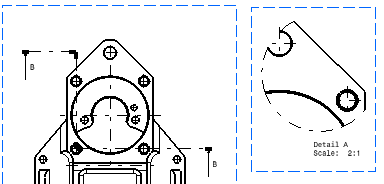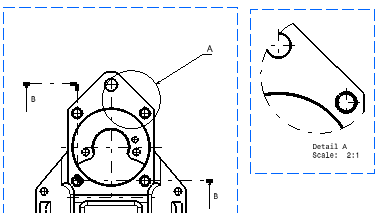Modifying the Existing Callout Geometry |
|
-
Double-click the callout to be modified.
The Edit/Replace toolbar appears.

-
Drag one of the element components to the desired location. In this particular case, drag one segment extremity of the callout.
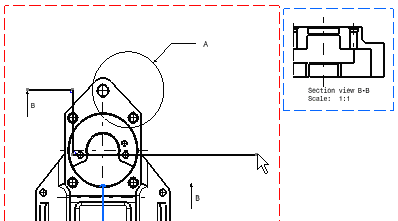

-
By default the segment extremities are not fixed.
-
To constrain one segment, right-click this segment and select Line.object > Fix.
-
To free one segment, right-click this segment and select Line.object > Unfix.
-
-
Click End Profile Edition
 in the Edit/Replace toolbar.
in the Edit/Replace toolbar.The callout arrow is now properly positioned and the section view (B-B) is automatically updated.
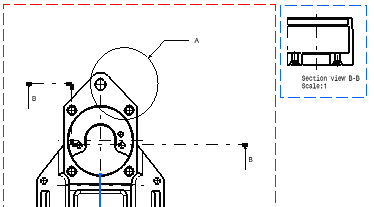
Reversing the Callout Direction |
|
-
Double-click the callout to be reversed.
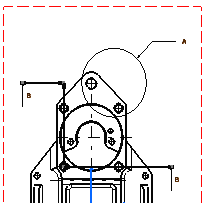
The Edit/Replace toolbar appears.
-
Click Invert Profile Direction in this toolbar.
The callout is automatically inverted.
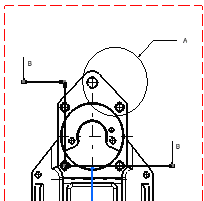

- At any time, you can stop editing the callout by clicking End Profile Edition in the Edit/Replace toolbar.
- You cannot reverse the callout of a detail.
- If the modification of a view containing a callout makes the projection planes of the defining and the resulting views inconsistent, the callout turns red to show that there is an inconsistency in the drawing. For more information, refer to More about red callouts below.
Replacing the Callout |
|
-
The callout to be replaced.
The Edit/Replace toolbar appears.
-
Click Replace Profile in this toolbar.
-
Start creating the new profile.
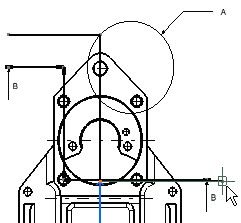
-
Double-click to end the new profile creation.
The new profile automatically appears and the old one disappears.
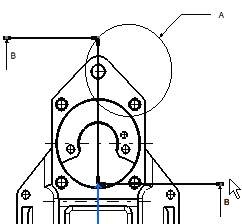
Recreating the Callout |
|
|
|
|||
|
|
|||
|
|
|||
|
|
|||
More About Red Callouts |
|
Modification of Callouts
If you modify an auxiliary or a section callout in a way that the plane of the resulting view is not parallel anymore compared to the previous plane view or if you invert the profile:
- all the callouts of the resulting view are displayed in red,
- you cannot edit them,
- the change is not propagated to detail view.
Translation of Section Callouts
If you translate a section callout, the plane of the resulting section
view is modified. It remains parallel to its previous orientation, yet
there is an inconsistency between the section view and the detail view
defined on the previous plane view.
As a consequence:
- the detail callout becomes red,
- other callouts remain unchanged,
- all callouts can be edited.
|
|
If you create a detail view on the section view and translate the section callout without any visible impact on the resulting section view, the detail callout becomes red anyway and is editable. |
Resizing of Callouts
If you resize a section callout constrained by the supporting lines of the profile:
- any detail callout does not turn into red,
- it can be edited
![]()




